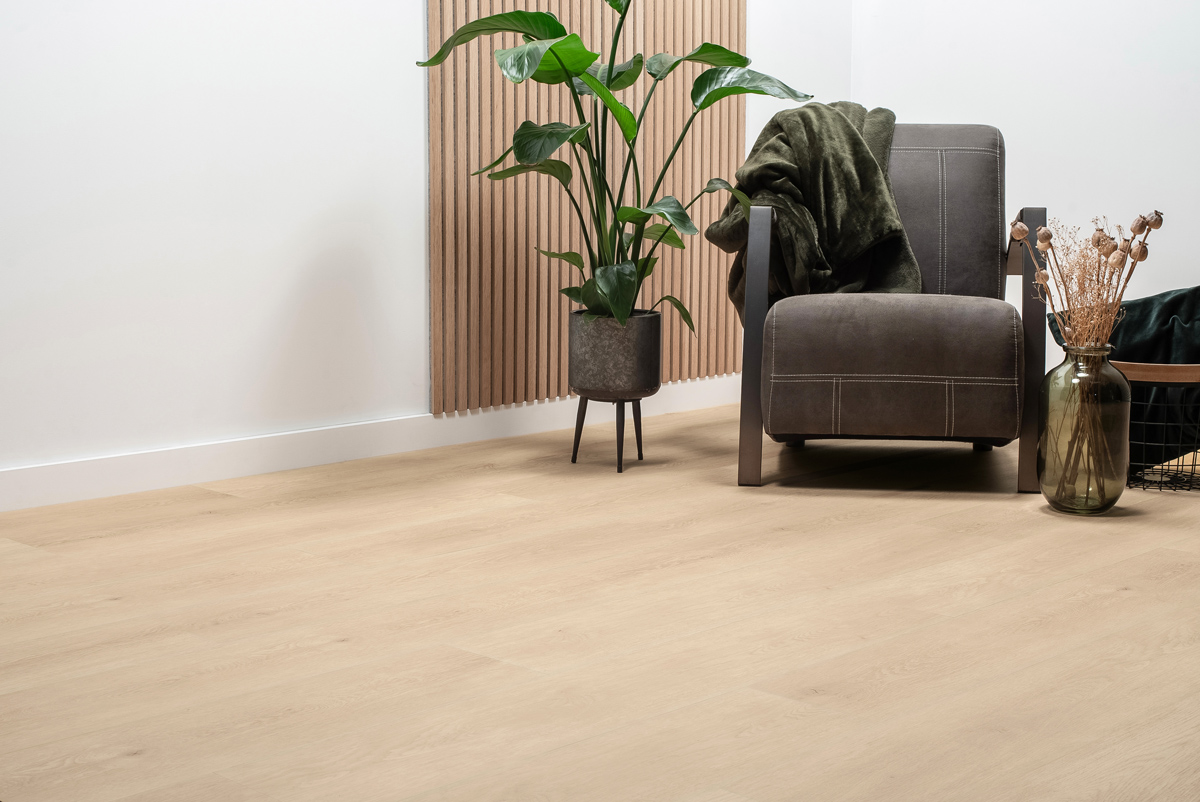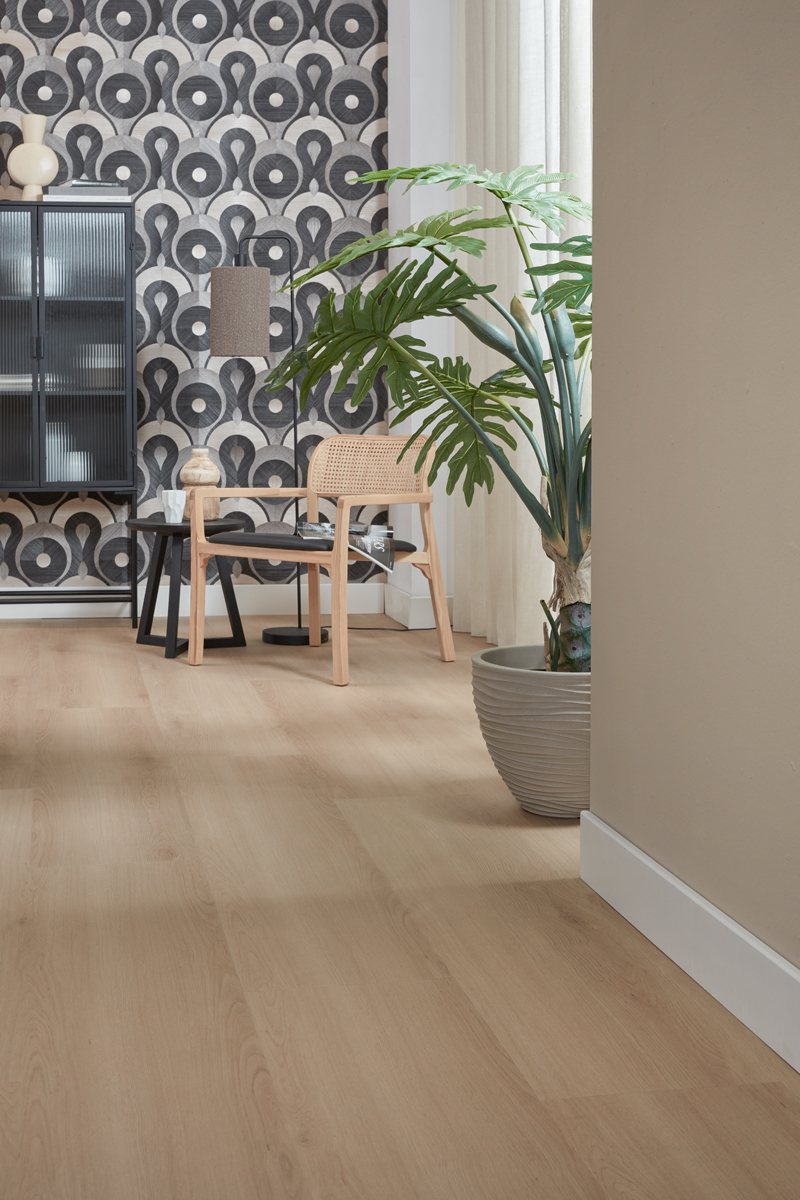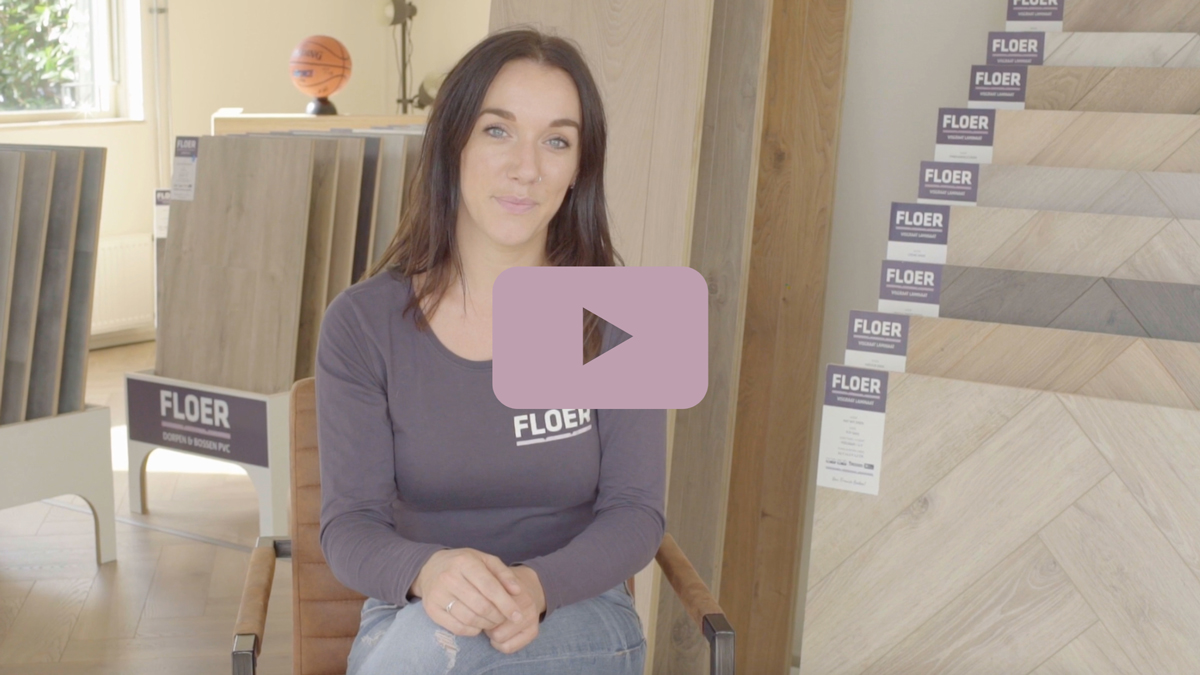
Current home and interior trends are dominated by black matte kitchens, steel doors, and herringbone floors. While the traditional herringbone pattern remains beautiful, you may be interested in something a little different. Have you considered Herringbone Vinyl flooring? If you’re curious about the difference between Herringbone and Whalebone Vinyl floors, check out this new FloerTube video!
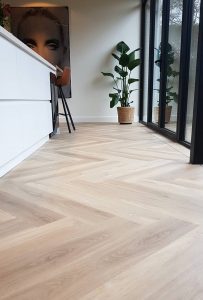
What is Whalebone?
First things first, because we often get the question: what exactly is a Whalebone floor? The name isn’t just for fun, it actually describes the length of the floorboards. We also refer to Whalebone Vinyl as the big brother of Herringbone because these floors have larger planks. Due to these dimensions, the points of Whalebone Vinyl are larger than those of Herringbone floors. Now that you know what a whalebone floor is, it’s time to explore the differences further!
Whalebone VS Herringbone floors
The video focuses on the four main differences and similarities between herringbone and whalebone floors. So, if you’re curious to learn more, keep reading to discover everything there is to know about them!
1. The size of the floorboards
The main difference between Whalebone Vinyl and Herringbone Vinyl is the size of their floorboards. The strips of vinyl from the popular Herringbone collection measure 91.4 cm in length and 15.2 cm in width. The regular Herringbone planks, on the other hand, are shorter and narrower, measuring 60 x 12 cm. Additionally, the dimensions of the patterned floors determine the number of herringbone points in the total area, which is discussed in more detail under difference number 4. However, there are other differences to consider as well!
2. The structure of the floor
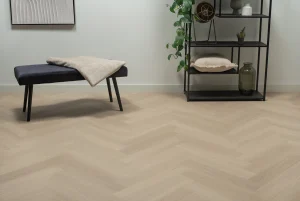
Unsure whether to choose a Whalebone or Herringbone floor? The structure of the floor can be decisive in making the perfect choice for you. The second difference between these types of floors is their texture. Whalebone floors have a tactile structure, meaning the floorboards have a subtle finish that emphasises the oak design.
The Herringbone Vinyl collection features floors with a register embossing structure. In other words, the vinyl planks have an oak design that not only looks but also feels realistic, creating a natural appearance. This small detail makes a big difference! Three different structures can finish Laminate, Dryback Vinyl, and Rigid Click Vinyl floors. To learn more about these structures, watch the FloerTube video.
3. Matte versus super matte
The third difference between Herringbone and Whalebone floors is the matte finish. Herringbone vinyl has a matte finish, which gives the floor a calm look in a home. Would you prefer something even more matte? Then choose a large Herringbone floor! The extra matte finish gives the Herringbone vinyl a lifelike design, making it the basis of a beautiful interior.
Want to see Whalebone Vinyl floor on a large area?
Our Floer office is also floored with Whalebone Vinyl, and you can be too! Many people love this flooring option for its warm oak appearance, realistic texture, and ample size of the herringbone design. The Floer Whalebone Vinyl – Orka Untreated can be paired with any interior style for a chic look. To better visualise the Whalebone on a larger surface, we invite you to watch the video and experience the sensation of the whalebone yourself.

4. Amount of herringbone points in the floor area
Many people covet Floer herringbone floors because of the numerous points in their pattern. The herringbone pattern has a distinctive look that makes it a popular choice. Those who prefer the more subdued appearance of whalebone floors are attracted to the larger, XL pattern with fewer points, while fans of Hungarian point and herringbone floors are particularly drawn to the many points in the pattern. This creates a slightly calmer aesthetic, which is why people fall in love with these large herringbone floors.
More differences
Looking for a stylish and durable herringbone vinyl floor like the Floer Herringbone Vinyl – Greige Oak? With a 15-year warranty, this Floer product is a great choice. However, if you’re looking for a herringbone floor with a longer warranty, you may want to consider a Herringbone Vinyl floor, which offers a 20-year warranty. Keep in mind that the selection of floors between these two types varies significantly. You can find herringbone floors in every Floer collection. Whether you prefer an Oak Parquet Herringbone floor, a Herringbone Laminate floor that you can install yourself, or Herringbone Rigid Click Vinyl, there are many options available to you. However, if you’re looking for a truly unique option, the Floer Whalebone Vinyl is a great choice, as Whalebone floors are only available in Oak Parquet and Vinyl variants.
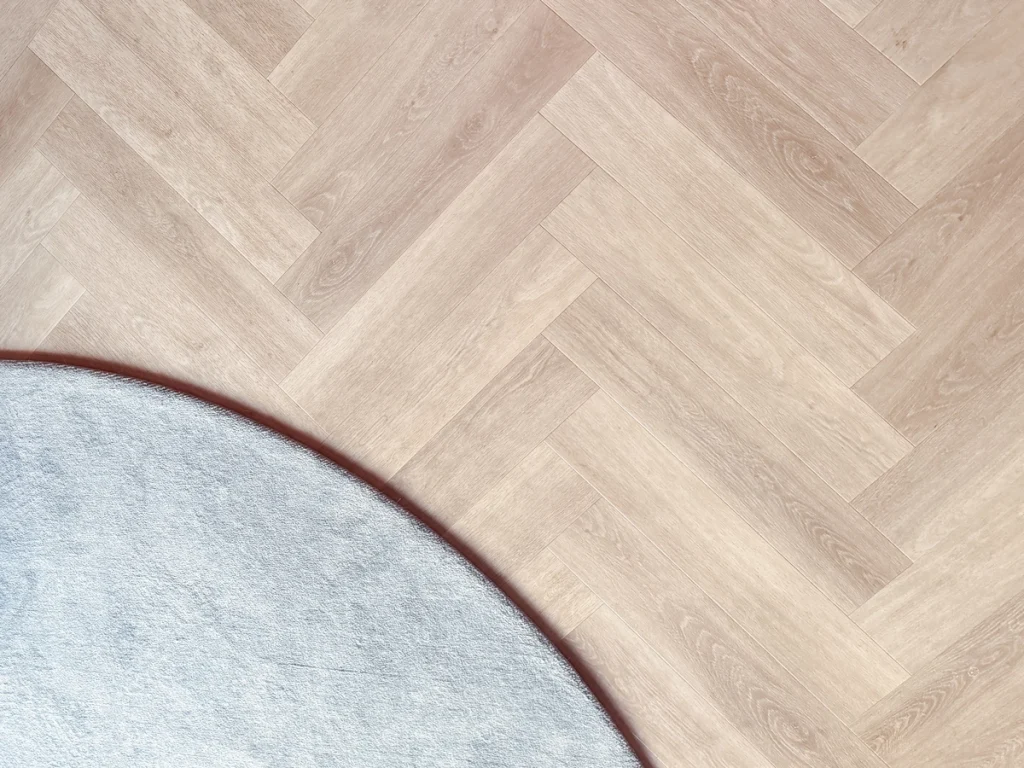
Herringbone Vinyl is available in six beautiful shades, ranging from Beige Oak to Greige Oak and everything in between. Among our customers, the colours Pure Oak and Beige Oak are very popular. If you’re curious about all the great Whalebone floors, the top three Whalebone Vinyl floors are the oak colours Orca Untreated, Cetus Cream, and Balein Beige. If you prefer Whalebone flooring in dark grey, check out Vaquita Greyed. Moreover, you can also discover the rustic wood tones of the Beloega Brown or the deep dark brown Whalebone Vinyl floor – Narwal Walnut Brown!
If you’re curious about more vinyl floors, explore the wide vinyl options in the Country House Vinyl and Village Vinyl collections. These are straight oak vinyl floors, but because Dryback Vinyl floors have no click-connection, you can also lay them in other patterns.
Looking to combine a warm, light oak floor with a tough tile floor in your bathroom or kitchen? Consider using one of the Rigid Click Vinyl or XL Vinyl tiles. In addition to Rigid Click Vinyl tiles, you can also explore other vinyl floors with a click connection, such as the Nature Rigid Click Vinyl and the Herringbone Rigid Click Vinyl. You can view all of our available floors on the Floer website. If you have an annoying scratch on your vinyl floor, check out our guide on how to remove scratches from vinyl floors.

